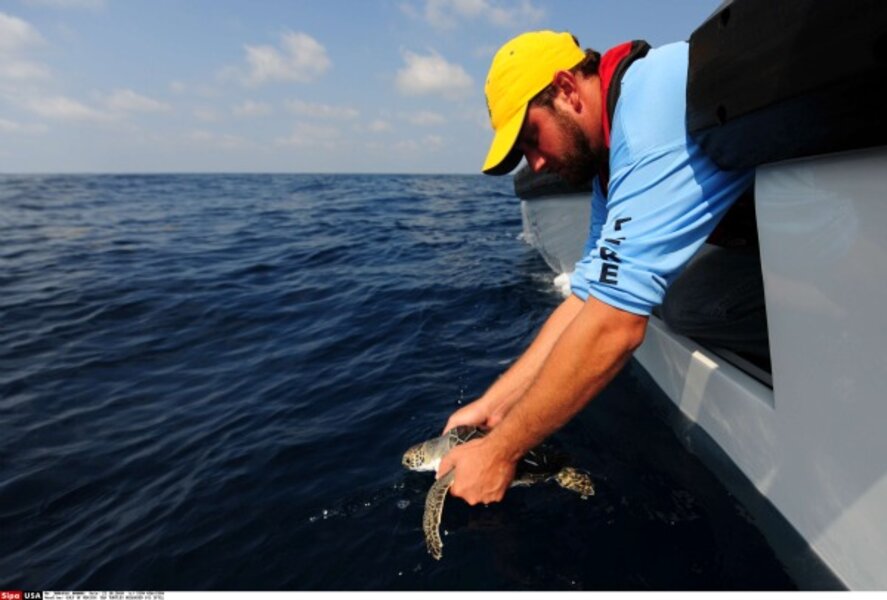Gulf oil spill: Deep water cleanup still needed?
| Chicago
A report released Thursday specifies that there is not enough oil remaining near the Macondo wellhead to warrant continued cleanup operations in the deepwater region of the Gulf of Mexico. As a result, response teams dedicated to cleanup efforts are being redirected to focus solely on oil mats located in shallow, sub-tidal areas offshore.
National Incident Commander Rear Adm. Paul Zukunft said the report prepared by his team is based on a six-month collection effort of 17,000 water and sediment samples that started in May, one month after the explosion of the Deepwater Horizon oilrig that released 205 million gallons (4.9 million barrels) of oil into the Gulf.
The report found no oil in sediments collected beyond the shoreline. It also finds that less than one percent of samples taken since early August exceeded the Environmental Protection Agency’s benchmarks for polycyclic aromatic hydrocarbons, which are carcinogenic, and that none of the water samples exceeding these benchmarks originated from the damaged well.
The news contradicts the work of Samantha Joye, a University of Georgia marine biologist whose team continues to report findings of thick oil layers deeply embedded on the ocean floor as far as 70 miles from the Macondo well site.
Joye was a member of a team of scientists reporting in mid-August that 80 percent of the oil remained in the Gulf in a highly toxic state and that, due to the high volume of dispersants used near the Macondo site, it is impossible to estimate how long it will take for the oil to fully degrade.
“It's going to take, I would suspect, years for the system to recover … and it's going to take more time for certain components of the system to recover,” she told National Public Radio last week.
The debate over how much oil remains in the Gulf and where it is continues as independent research groups, environmental organizations, and government scientists conduct separate missions to test water and sediment for evidence of the volume, concentration, and movement of the oil.
Reaching consensus does not appear to be on the horizon, although one may be needed: This past week the US Department of Justice filed a civil lawsuit against BP, the well owner, as well other operators involved in the explosion. The result could subject the companies to billions of dollars in penalties and damage claims.
The Unified Command report arrives with news that Rear Adm. Zukunft will be transitioning back to Coast Guard headquarters in Washington, D.C. and transferring cleanup operations to the regional Coast Guard authority led by Capt. Lincoln Stroh. Zukunft assumed federal authority over the recovery effort in September when he took over for Retired Coast Guard Adm. Thad Allen.
Over 360 vessels and a workforce of 6,400 remain in the Gulf at work on the recovery effort.





